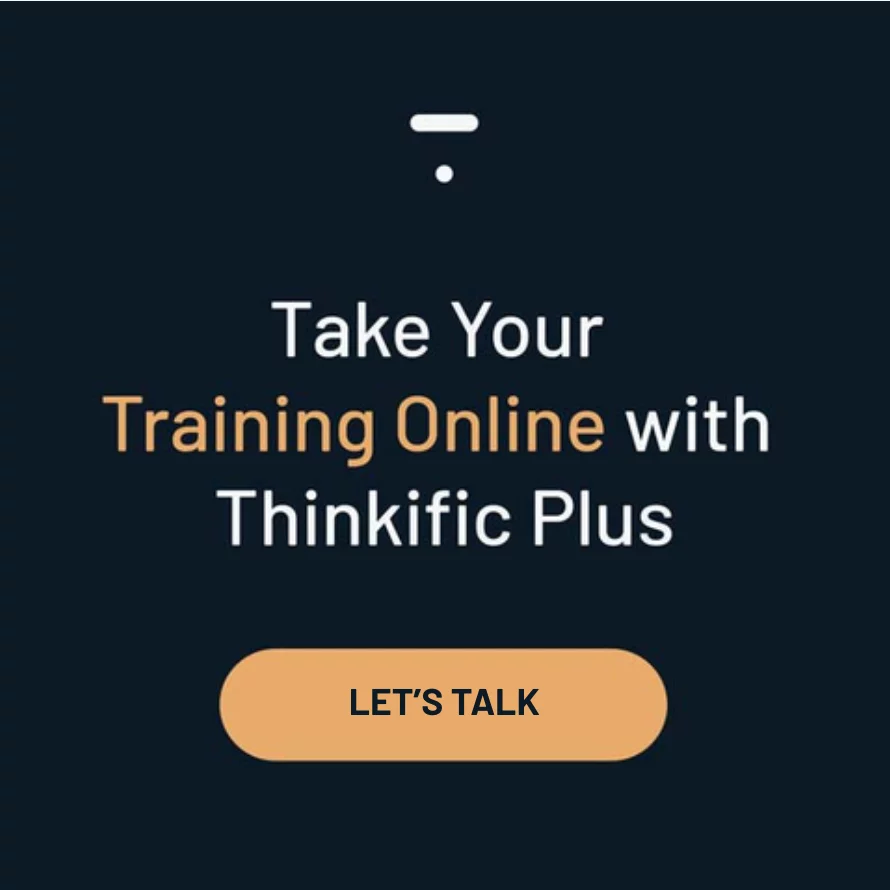75% of workplace learning is informal.
That means the majority of learning takes place outside of official training courses or classrooms and instead happens naturally and spontaneously, often in social settings.
To maximize learning and development in training, it’s important to encourage both formal and informal education and learning as much as possible. Here’s what you need to know about formal and informal education – including the key differences, similarities, and how to use both to train members of an organization.
Skip ahead:
- Formal and informal education definitions
- Formal vs informal learning comparison
- What is the difference between formal and informal education?
- Similarities Between Formal and Informal Education
- Examples of Formal and Informal Education
- How to use both formal and informal education for best results in training
Formal and informal education definitions
First up – what do we mean when we talk about formal and informal education? Here are the definitions.
Formal learning is learning that’s delivered in a controlled, systematic way and guided by an educator or instructor. In a formal learning environment – either online or in-person – learning follows a structured learning path with a definitive goal like achieving a certification or degree. Formal learning includes school teaching, university courses, employee training, health and safety training, and much more.
Unlike formal education, informal education doesn’t follow any specific structure or system. Informal learning usually takes place outside of formal learning settings and is self-directed, so it usually happens spontaneously and naturally.
When it comes to informal learning, the learner has no specific goal in mind – and may not even realize that learning is taking place. For example, informal learning can happen while watching a video on social media, chatting with a colleague, or reading an article you find online. The learning isn’t necessarily deliberate – but you still gain new knowledge on a specific topic.
| Formal learning | Informal learning |
| Structured | Unplanned |
| Goal-oriented | Undefined goals |
| Educator-led | Self-directed |
| Learning delivered face-to-face and online | Learning happens spontaneously through research, discussions, and online resources |
| Includes assessments and accreditations | No formal assessment or recognition |
What is the difference between formal and informal education?
Here are 4 key differences between formal and informal education you need to know.
Structure
The biggest difference between formal and informal education is the structure that both forms of learning take. Formal education is systematic and organized – meaning learning is structured around achieving specific learning goals. For example, client onboarding might have the goal of helping new clients utilize key product features. The learning path is built with this goal in mind.
Informal learning is unstructured and unplanned. Unlike formal learning, it doesn’t follow any formal system – instead, learning is shaped by the learners’ individual decisions and actions, rather than a pre-set path.
For example, let’s say a conversation starts between two colleagues about how they organize their email inboxes for better productivity. If the learner is interested in the topic, they might ask questions to learn more about the topic or seek out other resources like listening to a podcast or reading a blog. The conversation is unstructured and doesn’t have a specific goal in mind – but learning is taking place.
Teaching Methods
It’s easy to tell the difference between formal and informal education by looking at the teaching methods – essentially, formal education includes teaching and informal education doesn’t.
Formal education is structured and taught by an educator like a teacher, professor, course instructor or coach. The teaching might happen face-to-face or online. Even if the learning is self-directed, formal education is designed, created, and delivered by an educator.
Informal learning doesn’t include any formal teaching. That means there’s no set educator or instructor. Learners may learn from a specific person – who may be an expert in their field – but there is no fixed teaching or lessons.
Learning Environment
As formal education takes a structured approach to learning, it often takes place in a formal learning environment – either in-person or online. Learning happens in a specific learning space like a classroom, a Zoom meeting room, or via an LMS.
Informal learning happens without any learning purpose in mind, so it can happen anywhere – including in formal learning environments like schools and universities but it also outside in the ‘real-world’. Informal learning can happen on the bus, in a cafe, on vacation, and anywhere else.
Assessment and Accreditation
A key characteristic of formal education is that it usually includes assessments such as exams, quizzes, and formal assignments. At the end of a course, it’s common for learners to receive a certification or accreditation to mark their completion.
Informal learning doesn’t include any assessments or accreditations because it is unplanned – no one gives you a certificate for chatting with your colleagues. It happens outside of formal learning settings and learners’ knowledge isn’t tested or rewarded.
Similarities Between Formal and Informal Education
While there are key differences between formal and informal education, there are also some similarities between the two learning formats. Here are 3 of the most important.
Social interaction
Humans are social animals. We learn by observing and interacting with the people around us.
Both formal and informal education are enhanced by social interactions. In formal education, learners benefit from social interaction with their course instructors, community moderators, and other learners in their cohort.
Informal learning takes a less structured approach to social learning, but it tends to be a social rather than an individual activity. Think about the times that you’ve learnt through conversations with colleagues and friends, participation in online forums and communities, and spending time on social media. These are all examples of social interactions where informal learning is taking place.
Input from teachers and facilitators
Formal and informal education both include teachers of some kind – but while formal education is controlled and delivered by educators, informal education happens naturally.
Imagine an in-person employee training program taught by an instructor in a classroom. The course itself is the formal education element but informal education can also happen through casual conversations between learners and their instructor, for example. Just spending time with someone who’s an expert in their field can result in informal education opportunities – even without either person realizing it.
Lifelong learning
Learning is a lifelong process. While formal education occurs at specific times – such as at school, university, and at work – both formal and informal education can happen at any time throughout our lives. Informal learning is spontaneous and continuous, but formal learning can also happen at any point. As soon as you choose to watch an educational video series, enroll in an online course, or take part in a training session, you’re taking part in a form of formal learning.
Examples of Formal and Informal Education
It’s common for formal and informal education to take place alongside each other – and blending the two can lead to the best outcomes for learners. Here are some examples of how it works.
Learning a second language
Imagine you decide to relocate to a new country and you choose to enroll in a language course to learn the language of your host country.
The course will probably take the form of face-to-face lessons in a classroom and follow a structured approach to learning – teaching you about specific vocabulary and grammar rules, and include assessments. This is an example of formal learning.
Informal learning will happen when you leave the classroom and go to work or to the supermarket, for example. Then you’re surrounded by people speaking the new language and labels and phrases written in that language. You will naturally listen and learn the language by absorbing information from the world around you, as well as by talking to the cashier and the other shoppers.
This is an example of informal learning – but it’s just as important and useful as the formal education you’re receiving too.
Employee management training
Employees often engage in formal and informal education at work. Management training is a great example – an employee might be put forward for a formal management training course where they complete online modules and courses taught by an instructor with the goal of qualifying to be a manager in their organization. This is the formal education element.
But outside of the formal training program, that employee may also learn how to be a good leader and an effective manager by observing other managers in their organization, as well as through conversations with c-suite executives, and after-work events with colleagues. This is an example of informal learning that’s helping to enhance and reinforce the formal education of the company training program.
How to use both formal and informal education for best results in training
To improve learning outcomes in your organization, it’s important to encourage both formal and informal education. Here are 3 ways to facilitate both learning types.
- Build learning communities: Learning is often a social activity – so maximize both formal and informal learning by providing opportunities for discussions outside of the classroom. Choose a corporate LMS that lets you build learning communities, including forums, online discussion boards, and chat functions to help learners interact and engage with training content.
- Assign mentors and buddies: To increase informal learning opportunities, pair learners with mentors or buddies to facilitate learning outside of the classroom and provide a more dynamic learning experience.
- Find strategies to increase engagement: Engaged learners are more hungry for knowledge – and more likely to take part in both formal and informal learning. Structure training for maximum engagement by adding videos, quizzes, gamification, and extra resources for additional learning beyond the course content.
Ready to take advantage of formal and informal education?
If you’re looking to improve learning outcomes in your organization, it’s important to understand the difference between formal and informal education – and how to leverage both forms of education for best results.
Take your education program to the next level. Whether you’re navigating the complexities of formal education or exploring the flexibility of informal learning, our tailored solutions are designed to scale with your needs.
Request a solutions call with our experts today and discover how we can help you transform your educational approach, drive engagement, and achieve success.






